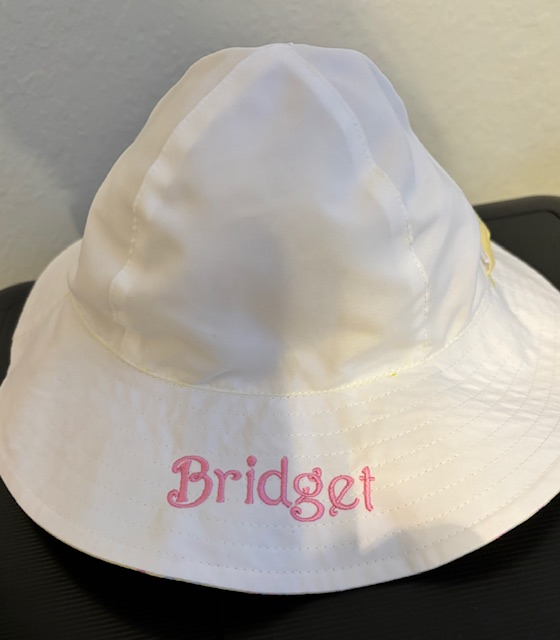The Art of Personalized Needlework: Opening the Keys to Creating One-of-a-kind and Remarkable Layouts
The keys to developing customized embroidery layouts that mesmerize the eye and leave a long lasting impact lie in a fragile balance of strategy, imagination, and attention to information. As we delve right into the world of personalized needlework, we uncover the nuanced interaction between string choice, sew complexity, and layout personalization that elevates a simple garment to a work of art.
Picking the Right Embroidery Threads
When picking needlework threads, what essential variables should you consider to guarantee the very best outcomes for your customized styles? The choice of needlework string is essential in establishing the final result of your stitched layout. Among the key factors to consider is the product of the string. Various materials such as cotton, polyester, rayon, and silk use varying degrees of luster, sturdiness, and structure. It is necessary to select a string material that complements the textile you are stitching on and straightens with the preferred look of the layout.
Furthermore, the weight or density of the string plays a considerable duty in the look of the needlework. Thicker strings can include measurement and texture to your style, while finer threads are excellent for complex details and tiny message. Furthermore, considering the color fastness and washability of the thread is crucial to make sure that your custom-made designs maintain their high quality and vibrancy gradually. By very carefully examining these elements and picking premium threads that fulfill your details demands, you can boost the visual appeal and longevity of your embroidered productions.
Exploring Various Stitch Techniques
To delve into the realm of 'Checking out Various Stitch Methods', one must understand the details and nuances that each stitching method offers the art of embroidery. Different stitch techniques not only include visual passion however additionally add to the overall structure and measurement of the design. One prominent stitch technique is the satin stitch, which includes closely packed parallel stitches to produce a smooth and glossy surface area, perfect for loading in forms and producing vibrant lays out.
On the various other hand, the backstitch is a functional method typically used for describing and including great information. It involves stitching backward to create a solid line of embroidery. Furthermore, the French knot stitch includes a responsive component to layouts, excellent for creating textured accents like flower facilities or decorative touches.
Exploring different stitch methods enables embroiderers to play with light, shadow, and depth within their designs, elevating the aesthetic appeal and artistic quality of their embroidery projects. By mastering various sewing approaches, one can open countless opportunities for producing special and unforgettable custom-made embroidery pieces.
Incorporating Personalized Design Elements
Having actually discovered the complexities of different stitch strategies such as the satin stitch, backstitch, and French knot, the emphasis now changes towards including individualized design aspects in customized needlework projects. Individualized style components play an important role in making needlework projects absolutely distinct and remarkable.
One more means to integrate personalized layout aspects is by consisting of symbols or concepts that hold special definition to the recipient or reflect their passions and character. Incorporating a preferred blossom, animal, or hobby-related sign can make the needlework style a lot more meaningful and individualized. In addition, choosing colors that reverberate with the recipient or straighten with the intended style can better enhance the personalization of the needlework task.
Mastering the Art of Shade Control
One trick aspect of shade sychronisation is recognizing color concept. This includes recognizing how various colors engage with each other, the emotions they communicate, and exactly how they can be combined to develop visually attractive styles. By applying shade concept principles, embroiderers can create harmonious shade palettes that improve the general appearance of the layout.
Additionally, taking note of comparison is essential in shade sychronisation. Making use of contrasting shades can aid certain elements of the style pop, improve legibility, and produce an aesthetically dynamic embroidery item. By grasping the art of shade control, embroiderers can boost their layouts and develop remarkable items that reverberate with customers and viewers alike.
Enhancing Texture With Advanced Embroidery Stitches

French knots, for example, are best for including tiny, raised dots to your style, simulating the appearance of grains or creating a textured surface. Bullion knots, on the various other hand, can be made use of to develop twisted, ropelike components that include a glamorous feeling to the needlework. Seed stitching includes small, scattered stitches that can fill in areas with a speckled structure, while turkey job develops cosy, dimensional accents reminiscent of pet fur or vegetation. Trying out with these advanced needlework stitches allows you to push the boundaries of traditional needlework and develop truly unique and aesthetically appealing textures in your designs.
Final Thought
In final her comment is here thought, the art of customized embroidery entails a combination of choosing the appropriate threads, exploring numerous stitch methods, incorporating personalized layout aspects, mastering shade mens tapered suits sychronisation, and enhancing texture with innovative stitches. By recognizing and carrying out these essential components, embroiderers can develop special and memorable designs that display their creative thinking and ability. Embroidery fanatics can open the secrets to producing lovely and bespoke pieces that stand out and leave an enduring impression.